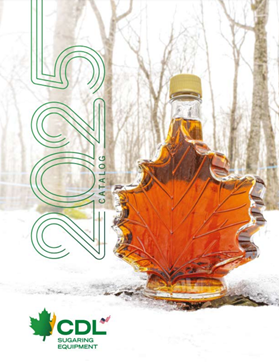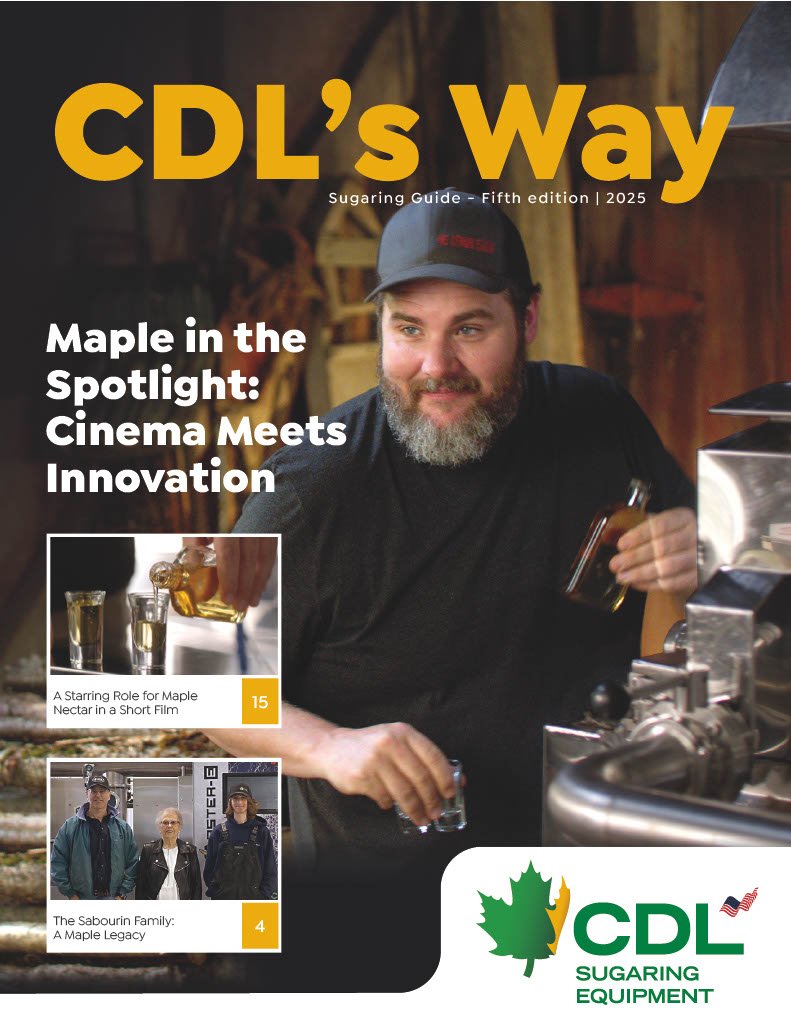Research on the effect of tubing colour on maple sap harvesting: the results
Collaboration between the Centre ACER and CDL Maple Sugaring Equipment
In last spring’s issue of CDL’s Way, we discussed a research project on tubing colour, a collaboration between CDL and the Centre ACER. The project was still ongoing at the time, so the results weren’t known. Today, we can finally share the main results of this research and discuss the issues surrounding tubing colour
The colour of the tubing has been of interest to maple syrup producers for a number of years. The reason for this is that a dark material absorbs the sun’s rays better and heats up faster than a light material. As a result, it could help the tubing thaw faster and allow it to start working earlier in the day. On the other hand, it could also promote microbial growth in the sap during the season, leading to earlier degradation. These issues led to questions about whether tubing colour affected sap volumes and quality. Similar studies had been done in the past on spile colour only, but were unable to show an effect on sap volume. The question remained open as to the effect of tubing colour on volume and quality. In order to provide some answers, a project was set up at the Centre ACER’s experimental sugarbush. This project was mainly designed to compare two types of tubing that were identical except for their colours: one was blue (light) and the other grey (dark) (fig. 1).
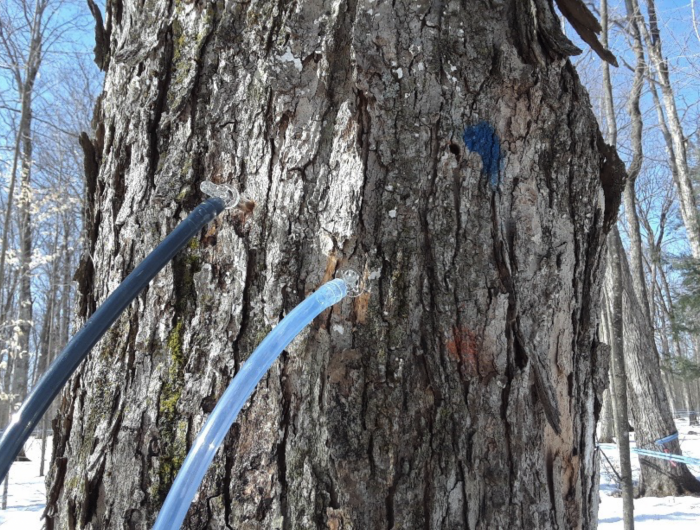
Fig. 1: Paired tapping system on the same trees, used to compare the blue (light) and grey (dark) tubing
In this project, a rigorously controlled experimental setup was used to compare both types of tubing. For example, tapping was done in pairs (both tubing types in the same trees) and replicated enough times to minimize the influence of other variables that could distort the findings. In addition, the system was equipped with vacuum and outdoor temperature sensors for the tubing and the sap, as well as calibrated meters to measure the volumes of sap harvested each day. Finally, a sap sampling plan was implemented to monitor sap quality throughout the season.
Overall, the 2021 sugaring season was relatively short, with relatively high outdoor temperatures. Nevertheless, continuous temperature readings of the blue and grey tubing at various locations in the systems showed that the grey tubing tended to reach higher temperatures than the blue tubing. On average, the grey tubing reached a daily maximum temperature that was 1.3 °C higher than the blue tubing (fig. 2).
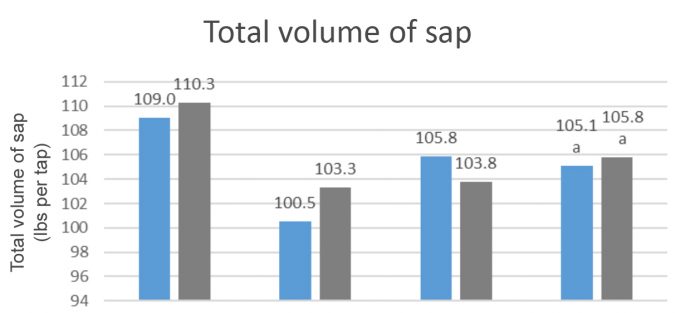
Fig. 2: Average daily maximum surface temperature at different locations in the tubing system Different letters beside the averages indicate a significant difference (p <0.05).
The differing temperatures of the tubing, however, did not significantly affect the temperature of the sap; the daily maximum temperature of sap collected with the blue tubing was, on average, comparable to that of the grey tubing (fig. 3).
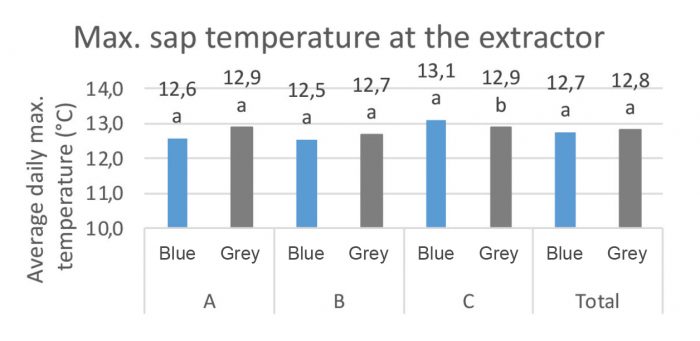
Fig. 3: Average daily maximum temperature of the sap at the extractor for both systems Different letters beside the averages indicate a significant difference (p <0.05).
Much like sap temperature, the sap volumes were comparable between the two colours, with an average of about 105 L of sap per tap harvested with each colour of tubing (fig. 4). As for sap quality, measurements of microbial contamination at different points in the season, as well as sugar analyses, did not reveal any difference between the colours. In general, for both colours, the sap was minimally contaminated with no apparent degradation of the sugars.
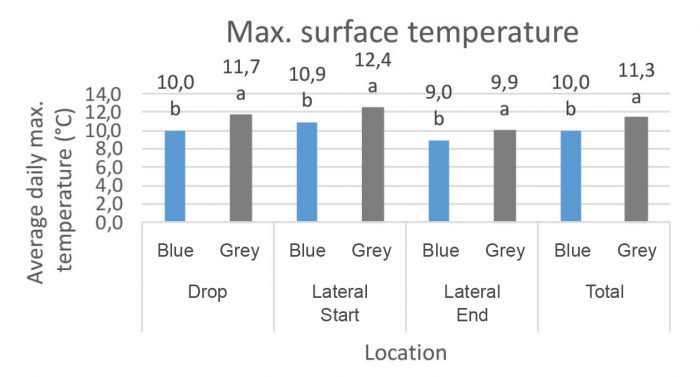
Fig. 4: Volume of sap harvested from the systems with blue and grey tubing Different letters beside the averages indicate a significant difference (p <0.05).
In sum, this research showed that the tubing colour did not affect sap volumes or microbial degradation, though the grey tubing did have a significantly higher average maximum surface temperature. It should be noted that these results are tied to the specific conditions of the study, i.e., the characteristics of the experimental sugarbush at the Centre ACER (sugarbush with little slope and a relatively high average dbh), a 2021 season characterized by relatively high outside temperatures and a relatively short sugaring season, and the fact that the tubing was new. Significantly different conditions could therefore lead to different results. However, in a sugarbush that has similar conditions to the study, the use of different coloured tubing could be useful to distinguish production sectors without significantly influencing sap volume or characteristics.

